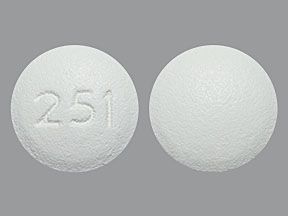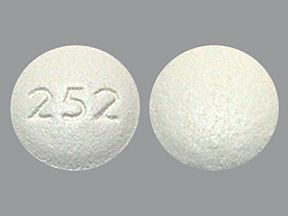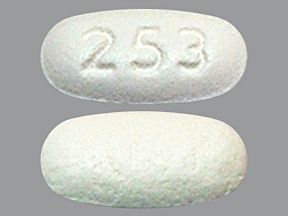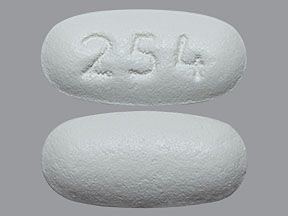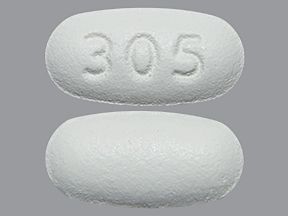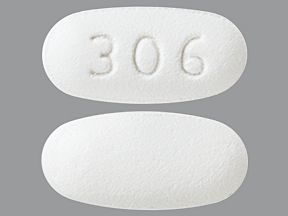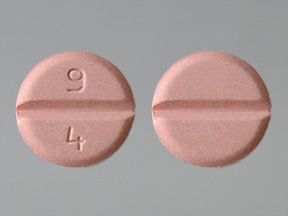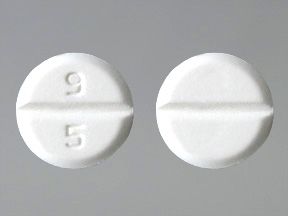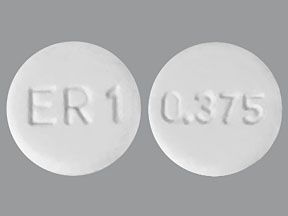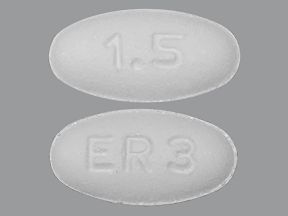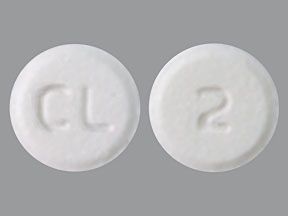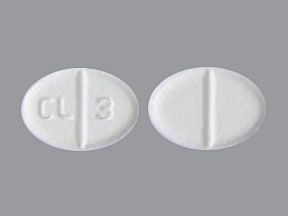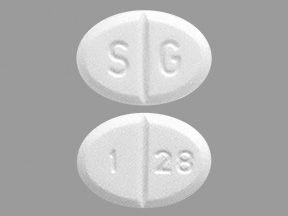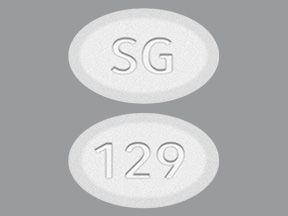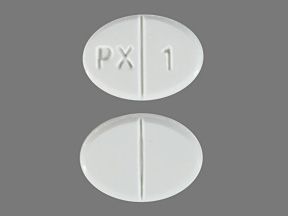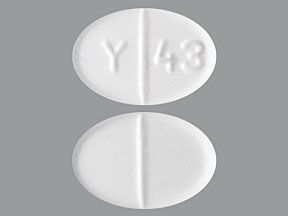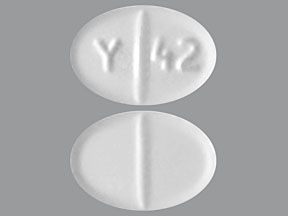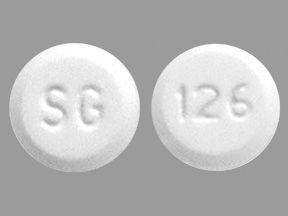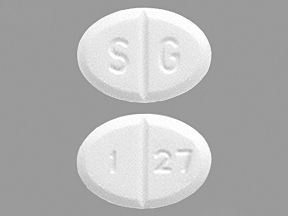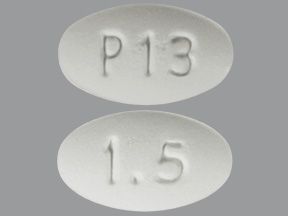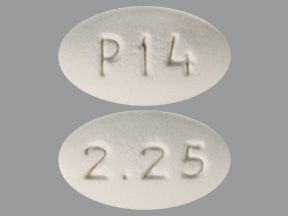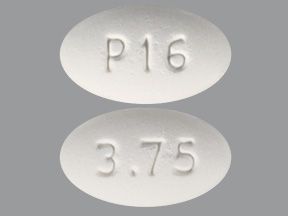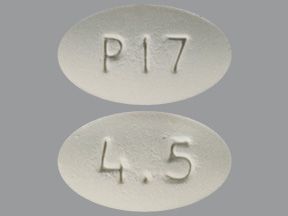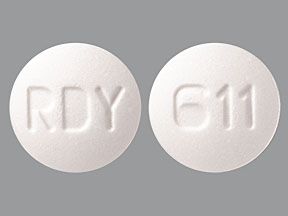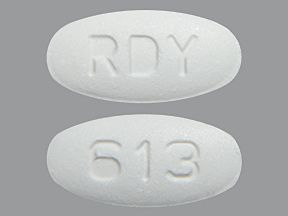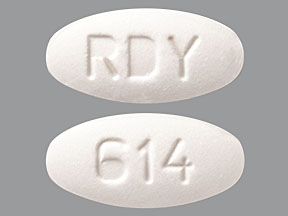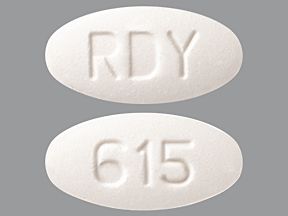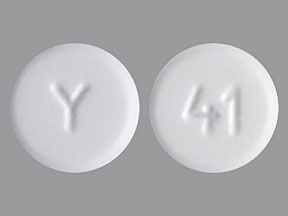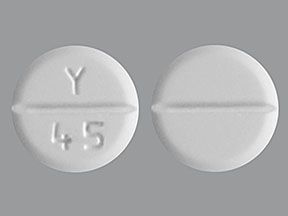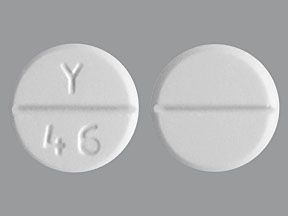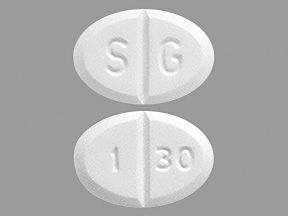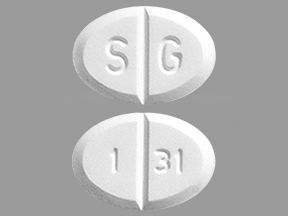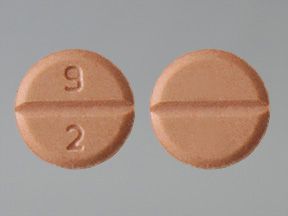- Pramipexole oral tablets are available as both generic and brand-named drugs. Brand names: Mirapex and Mirapex ER.
- Pramipexole tablets come in immediate-release and extended-release forms you take by mouth.
- Pramipexole immediate-release and extended-release tablets are used to treat Parkinson’s disease. Pramipexole immediate-release tablets are also used to treat restless legs syndrome.
- Falling asleep suddenly: This drug may cause you to fall asleep suddenly while doing activities. This may happen without warnings signs, such as drowsiness. Talk with your doctor about driving, using machinery, or doing other activities that require alertness while you take this drug.
- Dizziness and fainting: This drug can cause dizziness, lightheadedness, nausea, sweating, or fainting, especially when you stand up quickly from a sitting or lying down position. This is more likely to occur when you first start taking this drug. To reduce your risk, move slowly when you stand up. These side effects may go away over time.
- Impulsive or compulsive behaviors: You may have increased urges to gamble, binge eat, or engage in sexual behaviors while taking this drug. If this happens, tell your doctor. They may decrease your dosage or have you stop taking this drug.
- Hallucinations or psychotic-like behavior: This drug may cause hallucinations (seeing or hearing things that aren’t real) or changes in your behavior. You may feel confused, agitated, or aggressive. If this happens, tell your doctor. They may decrease your dosage or have you stop taking this drug.
- Postural deformity: This drug may cause certain changes in the way you hold your body. These include antecollis (leaning your neck forward) and camptocormia (bending forward at your waist). They also include pleurothotonus (leaning sideways at your waist). These changes typically occur after starting this drug or increasing the dosage, and may occur several months after you start treatment or change your dosage. If you notice symptoms of these conditions, tell your doctor right away. They may change your dosage or stop your treatment with this drug.
Pramipexole is a prescription drug. It comes in immediate-release and extended-release oral tablets.
Pramipexole oral tablets are available as the brand-name drugs Mirapex and Mirapex ER. Pramipexole is also available as a generic drug. Generic drugs usually cost less than the brand-name version. In some cases, they may not be available in all strengths or forms as the brand-name drug.
Why it’s used
Pramipexole immediate-release and extended-release oral tablets are used to control the symptoms of Parkinson’s disease. These include trouble with muscle control, movement, and balance.
Pramipexole immediate-release tablets are also used to treat the symptoms of restless legs syndrome. These include discomfort in your legs and a strong desire to move your legs, especially when sitting down or lying in bed.
Pramipexole may be used as part of a combination therapy. This means you may need to take it with other medications.
How it works
Pramipexole belongs to a class of drugs called dopamine agonists. A class of drugs is a group of medications that work in a similar way. These drugs are often used to treat similar conditions.
Pramipexole works by activating certain receptors in your brain. This helps decrease the severity of Parkinson’s disease and restless legs syndrome.
Pramipexole may cause drowsiness. You shouldn’t drive, use machinery, or do other activities that require alertness until you know how this drug affects you. Pramipexole may also cause other side effects.
More common side effects
The more common side effects of pramipexole include:
- nausea
- loss of appetite
- diarrhea
- constipation
- unusual body movements (dyskinesia)
- weakness
- dizziness and drowsiness
- confusion
- strange thoughts or dreams
- dry mouth
- needing to urinate more often or an increased urgency to urinate
- swelling in your legs or arms
If these effects are mild, they may go away within a few days or a couple of weeks. If they’re more severe or don’t go away, talk with your doctor or pharmacist.
Serious side effects
Call your doctor right away if you have serious side effects. Call 911 if your symptoms feel life-threatening or if you think you’re having a medical emergency. Serious side effects and their symptoms can include the following:
- Rhabdomyolysis (muscle breakdown). Symptoms can include:
- dark-colored urine
- muscle weakness, soreness, or stiffness
- Hallucinations. Symptoms can include:
- seeing things that don’t exist
- hearing things that don’t exist
- Psychotic-like behavior. Symptoms can include:
- confusion
- unusual behavior, such as aggression, agitation, and delirium
- extreme aggression
- Vision issues. Symptoms can include:
- changes in vision that make it harder for you to see
- Postural deformities. Symptoms can include:
- leaning your neck forward
- bending forward at your waist
- leaning sideways at the waist
Disclaimer: Our goal is to provide you with the most relevant and current information. However, because drugs affect each person differently, we cannot guarantee that this information includes all possible side effects. This information is not a substitute for medical advice. Always discuss possible side effects with a healthcare professional who knows your medical history.
Pramipexole oral tablets can interact with other medications, vitamins, or herbs you may be taking. An interaction is when a substance changes the way a drug works. This can be harmful or prevent the drug from working well.
To help avoid interactions, your doctor should manage all of your medications carefully. Be sure to tell your doctor about all medications, vitamins, or herbs you’re taking. To find out how this drug might interact with something else you’re taking, talk with your doctor or pharmacist.
Examples of drugs that can cause interactions with pramipexole are listed below.
Mental health and nausea drugs
These drugs may block the effects of pramipexole. This means it won’t work as well to treat your condition. These drugs include:
- metoclopramide
- phenothiazines, such as:
- chlorpromazine
- fluphenazine
- perphenazine
- prochlorperazine
- thioridazine
- trifluoperazine
- butyrophenones, such as:
- droperidol
- haloperidol
Sleep aid drugs
Taking pramipexole with other drugs that make you sleepy may increase your risk of drowsiness or falling asleep suddenly during the day. These drugs include:
- diphenhydramine
- zolpidem
Disclaimer: Our goal is to provide you with the most relevant and current information. However, because drugs interact differently in each person, we cannot guarantee that this information includes all possible interactions. This information is not a substitute for medical advice. Always speak with your healthcare professional about possible interactions with all prescription drugs, vitamins, herbs and supplements, and over-the-counter drugs that you’re taking.
Pramipexole oral tablets comes with several warnings.
Allergy warning
Pramipexole can cause a severe allergic reaction. Symptoms can include:
- rash
- hives
- itching
- red, swollen, blistered, or peeling skin with or without a fever
- wheezing
- trouble breathing or talking
- unusual hoarseness
- swelling of your mouth, face, lips, tongue, or throat
If you have an allergic reaction, call your doctor or local poison control center right away. If your symptoms are severe, call 911 or go to the nearest emergency room.
Don’t take this drug again if you’ve ever had an allergic reaction to it. Taking it again could cause death.
Alcohol interactions
The use of drinks that contain alcohol can increase the drowsiness you may experience with pramipexole. If you drink alcohol, talk with your doctor.
Warnings for people with certain health conditions
For people with kidney disease: You may have a higher risk of side effects. If you have kidney problems, talk with your doctor. Your doctor might change your dose.
Warnings for other groups
For pregnant people: There isn’t enough information available about the use of this drug in pregnant people to determine the risk to the pregnancy. Talk with your doctor if you’re pregnant or planning to become pregnant. This drug should only be used if the potential benefit justifies the potential risk.
For people who are nursing: Pramipexole may pass into breast milk and may cause side effects in a child who’s nursing. The drug may also cause problems with your body’s ability to produce breast milk.
Talk with your doctor if you nurse your baby. You may need to decide whether to stop breastfeeding or stop taking this medication.
For children: This drug hasn’t been studied in and shouldn’t be used in children younger than 18 years of age.
This dosage information is for pramipexole oral tablets. All possible dosages and drug forms may not be included here. Your dosage, drug form, and how often you take the drug will depend on:
- your age
- the condition being treated
- the severity of your condition
- other medical conditions you have
- how you react to the first dose
Forms and strengths
Generic: Pramipexole
- Form: oral immediate-release tablet
- Strengths: 0.125 mg, 0.25 mg, 0.5 mg, 0.75 mg, 1 mg, 1.5 mg
- Form: oral extended-release tablet
- Strengths: 0.375 mg, 0.75 mg, 1.5 mg, 2.25 mg, 3 mg, 3.75 mg, 4.5 mg
Brand: Mirapex
- Form: oral immediate-release tablet
- Strengths: 0.125 mg, 0.25 mg, 0.5 mg, 0.75 mg, 1 mg, 1.5 mg
Brand: Mirapex ER
- Form: oral extended-release tablet
- Strengths: 0.375 mg, 0.75 mg, 1.5 mg, 2.25 mg, 3 mg, 3.75 mg, 4.5 mg
Dosage for Parkinson’s disease
Adult dosage (18 years and older)
- Immediate-release tablets:
- Week 1: 0.125 mg taken three times per day
- Week 2: 0.25 mg taken three times per day
- Week 3: 0.5 mg taken three times per day
- Week 4: 0.75 mg taken three times per day
- Week 5: 1 mg taken three times per day
- Week 6: 1.25 mg taken three times per day
- Week 7: 1.5 mg taken three times per day
- Extended-release tablets:
- Standard starting dosage: 0.375 mg taken once per day.
- Dosage increases: Your doctor may increase your dosage every 5 to 7 days.
- Maximum dosage: 4.5 mg taken once per day.
Child dosage (ages 0–17 years)
This drug hasn’t been consistently studied and shown to be safe and effective in this age group. This drug shouldn’t be used in children younger than 18 years.
Dosage for moderate to severe primary restless legs syndrome
Adult dosage (18 years and older)
- Immediate-release tablets:
- Standard starting dosage: 0.125 mg taken once per day in the evening, 2 to 3 hours before going to bed.
- Dosage increases: If needed, your doctor may increase your dosage every 4 to 7 days.
- Maximum dosage: 0.5 mg taken once per day in the evening.
Child dosage (ages 0–17 years)
This drug hasn’t been consistently studied and shown to be safe and effective in this age group. This drug shouldn’t be used in children younger than 18 years.
Special dosage considerations
If you have kidney disease and are taking immediate-release or extended-release pramipexole oral tablets for Parkinson’s, your doctor will reduce your dosage of pramipexole as needed.
If you have moderate or severe kidney disease and are taking immediate-release pramipexole oral tablets for restless legs syndrome, your doctor shouldn’t increase your dosage more than once every 14 days.
If you stop taking this drug for a long time and need to start taking it again, you may have to start taking it at a lower dose and slowly work up to the dosage you were taking.
Disclaimer: Our goal is to provide you with the most relevant and current information. However, because drugs affect each person differently, we cannot guarantee that this list includes all possible dosages. This information is not a substitute for medical advice. Always speak with your doctor or pharmacist about dosages that are right for you.
Pramipexole oral tablets are used for long-term treatment. They come with risks if you don’t take it as prescribed.
If you stop taking the drug or don’t take it at all: Your condition may suddenly get worse if you stop taking pramipexole. Your condition won’t improve if you don’t take the drug at all.
If you miss doses or don’t take the drug on schedule: Your medication may not work as well or may stop working completely. For this drug to work well, a certain amount needs to be in your body at all times.
If you take too much: You could have dangerous levels of the drug in your body. Symptoms of an overdose of this drug can include:
- headache
- nasal congestion
- dry mouth
- nausea
- vomiting
- flushing (reddening and warming of your skin)
- coughing
- fatigue
- visual hallucinations (seeing something that isn’t there)
- heavy sweating
- claustrophobia
- unusual movements in your shoulders, hips, and face
- palpitations (feeling like your heart is skipping a beat)
- lack of energy
- nightmares
If you think you’ve taken too much of this drug, call your doctor or seek guidance from the American Association of Poison Control Centers at 1-800-222-1222 or through their online tool. If your symptoms are severe, call 911 or go to the nearest emergency room right away.
What to do if you miss a dose: Take your dose as soon as you remember. But if you remember just a few hours before your next scheduled dose, take only one dose. Never try to catch up by taking two doses at once. This could result in dangerous side effects.
How to tell if the drug is working: Your symptoms of Parkinson’s disease or restless legs syndrome should improve.
Keep these considerations in mind if your doctor prescribes pramipexole oral tablets for you.
General
- You can take pramipexole with or without food.
- If you’re taking pramipexole for restless legs syndrome, take it 2 to 3 hours before bedtime.
- You can cut or crush the immediate-release tablets. You cannot cut or crush the extended-release tablets.
Storage
- Store this drug at a temperature between 59°F and 86°F (15°C and 30°C). Keep it away from high temperatures.
- Don’t store this medication in moist or damp areas, such as bathrooms.
Refills
A prescription for this medication is refillable. You shouldn’t need a new prescription for this medication to be refilled. Your doctor will write the number of refills authorized on your prescription.
Travel
When traveling with your medication:
- Always carry your medication with you. When flying, never put it into a checked bag. Keep it in your carry-on bag.
- Don’t worry about airport X-ray machines. They can’t hurt your medication.
- You may need to show airport staff the pharmacy label for your medication. Always carry the original prescription-labeled container with you.
- Don’t put this medication in your car’s glove compartment or leave it in the car. Be sure to avoid doing this when the weather is very hot or very cold.
Availability
Not every pharmacy stocks this drug. When filling your prescription, be sure to call ahead to make sure your pharmacy carries it.
Prior authorization
Many insurance companies require a prior authorization for this drug. This means your doctor will need to get approval from your insurance company before your insurance company will pay for the prescription.
There are other drugs available to treat your condition. Some may be better suited for you than others. Talk with your doctor about other drug options that may work for you.
Disclaimer: Healthline has made every effort to make certain that all information is factually correct, comprehensive, and up-to-date. However, this article should not be used as a substitute for the knowledge and expertise of a licensed healthcare professional. You should always consult your doctor or other healthcare professional before taking any medication. The drug information contained herein is subject to change and is not intended to cover all possible uses, directions, precautions, warnings, drug interactions, allergic reactions, or adverse effects. The absence of warnings or other information for a given drug does not indicate that the drug or drug combination is safe, effective, or appropriate for all patients or all specific uses.

